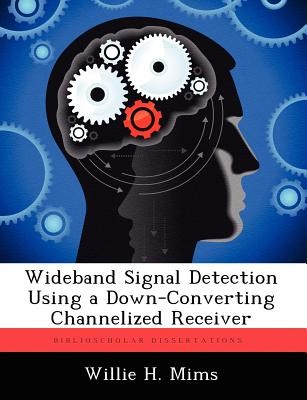
- We will send in 10–14 business days.
- Author: Willie H Mims
- Publisher: BiblioScholar
- ISBN-10: 1249588081
- ISBN-13: 9781249588085
- Format: 18.9 x 24.6 x 0.8 cm, softcover
- Language: English
- SAVE -10% with code: EXTRA
Wideband Signal Detection Using a Down-Converting Channelized Receiver (e-book) (used book) | bookbook.eu
Reviews
Description
Ultra wideband (UWB) signals typically occupy a very large spectral bandwidth resulting from extremely short duration pulses. Direct sequence spread spectrum (DSSS) signals typically occupy a large spectral bandwidth resulting from spreading methods. Both signals can be difficult to detect without having prior knowledge of their structure and/or existence. This research develops and evaluates techniques for the non-cooperative (nonmatched filter) detection of such signals. Impulse-like UWB and DSSS signals are received in an Additive White Gaussian Noise (AWGN) channel and are assessed using a bandpass filtered, down-converting (BPF-D/C) channelized receiver architecture. Modeling and simulation is conducted to characterize BPF-D/C channelized receiver detection performance, which is compared with the performance of two other non-cooperative detection receivers: a previously-introduced down-converting (D/C) channelized receiver and a conventional radiometer. The BPF-D/C channelized receiver detection performance for both signals of interest is shown to depend on the initial phase of the down-conversion mixers. There are usually some combinations of signal-to-noise ratio (SNR) and channel bandwidth where the BPF-D/C channelized receiver outperforms the radiometer and D/C channelized receiver for a UWB pulse. For a DSSS waveform, detection performance using the BPFD/ C channelized receiver is consistently poorer than radiometric detection.
EXTRA 10 % discount with code: EXTRA
The promotion ends in 19d.05:56:48
The discount code is valid when purchasing from 10 €. Discounts do not stack.
- Author: Willie H Mims
- Publisher: BiblioScholar
- ISBN-10: 1249588081
- ISBN-13: 9781249588085
- Format: 18.9 x 24.6 x 0.8 cm, softcover
- Language: English English
Ultra wideband (UWB) signals typically occupy a very large spectral bandwidth resulting from extremely short duration pulses. Direct sequence spread spectrum (DSSS) signals typically occupy a large spectral bandwidth resulting from spreading methods. Both signals can be difficult to detect without having prior knowledge of their structure and/or existence. This research develops and evaluates techniques for the non-cooperative (nonmatched filter) detection of such signals. Impulse-like UWB and DSSS signals are received in an Additive White Gaussian Noise (AWGN) channel and are assessed using a bandpass filtered, down-converting (BPF-D/C) channelized receiver architecture. Modeling and simulation is conducted to characterize BPF-D/C channelized receiver detection performance, which is compared with the performance of two other non-cooperative detection receivers: a previously-introduced down-converting (D/C) channelized receiver and a conventional radiometer. The BPF-D/C channelized receiver detection performance for both signals of interest is shown to depend on the initial phase of the down-conversion mixers. There are usually some combinations of signal-to-noise ratio (SNR) and channel bandwidth where the BPF-D/C channelized receiver outperforms the radiometer and D/C channelized receiver for a UWB pulse. For a DSSS waveform, detection performance using the BPFD/ C channelized receiver is consistently poorer than radiometric detection.


Reviews